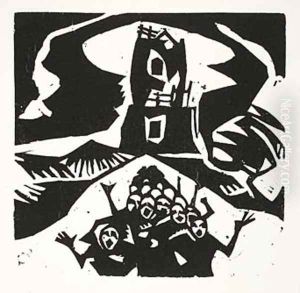Stanislaw Kubicki Paintings
Stanisław Kubicki was a Polish artist, born on May 17, 1889, in Warsaw, then part of the Russian Empire, and died on December 28, 1943, in Auschwitz, a German Nazi concentration and extermination camp, during World War II. Kubicki was an influential figure in the development of modern art in Poland, especially known for his contributions to the avant-garde and expressionist movements.
Kubicki began his artistic education at the Warsaw School of Fine Arts, where he studied under prominent Polish painters of the time. He furthered his studies in Munich, which was a significant center for artistic innovation in the early 20th century. Influenced by the vibrant art scene in Germany, Kubicki became involved with the German expressionist group Der Blaue Reiter (The Blue Rider), which included artists such as Wassily Kandinsky and Franz Marc.
Kubicki's style was characterized by bold colors, dynamic compositions, and a strong emotional undercurrent. His work often addressed themes of spirituality and mysticism, reflecting his interest in theosophy and philosophical ideas that were circulating among avant-garde artists of the time. He was also known to incorporate elements of folk art and symbolism into his paintings, which gave his work a distinctively Polish character.
In addition to painting, Kubicki was active in graphic design and illustration. He created posters, book covers, and other graphic works that displayed his unique style and his ability to adapt to different mediums. Kubicki was also involved in art education, teaching at the Free Polish University in Warsaw.
With the outbreak of World War II and the occupation of Poland by Nazi Germany, Kubicki, along with many other intellectuals and artists, faced severe persecution. His avant-garde style was deemed 'degenerate' by the Nazis, who sought to suppress all forms of modernist art. Despite the dangerous circumstances, Kubicki continued to create art until his arrest by the Gestapo. He was subsequently deported to Auschwitz, where he perished.
Stanisław Kubicki's legacy is one of innovation, resistance, and the quest for spiritual and artistic truth. His life and work reflect the tumultuous times he lived through, and his contributions to Polish modern art continue to be celebrated posthumously.
